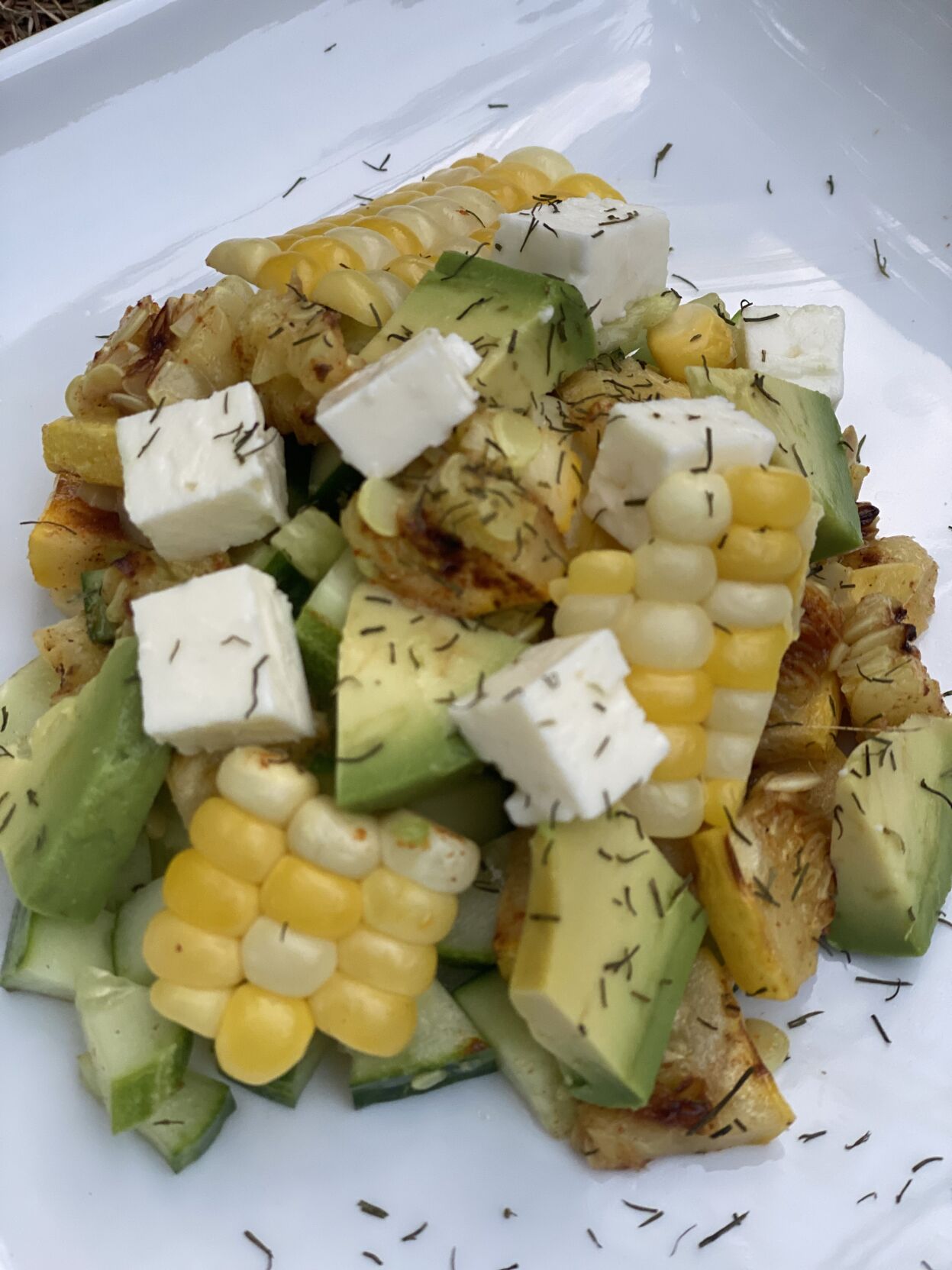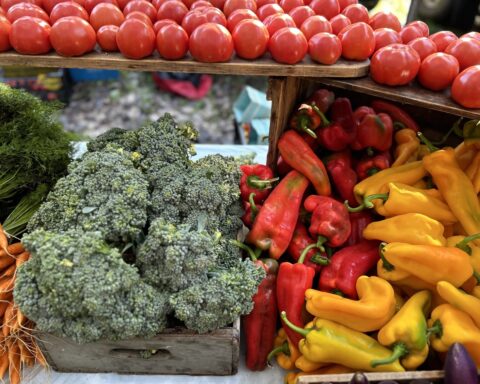By Katharine A. Jameson, Vermont Country correspondent.
I try to say no to my children every now and again just so they will hear the word “no.”
So often today, we are thrust into the child-led swirl of questions and requests and I find myself either dazing out and not answering them at all, or saying yes so they’ll stop pestering me (whatever happened to being seen and not heard?).
A fruit demand is not a request to which I will usually issue a negative answer, unless they ask for non-organic berries. For me, fruit is always allowed — it can be sugary, yes, but it is well-balanced with fiber and gives us more than it taketh away (nutrient-wise).
I had a client who lamented that she couldn’t eat fruit. I asked why and she responded that they contain too much sugar. My mind was blown. After all, I had just perused her food journal that was lined with packaged foods and meal replacement bars that packed MUCH more sugar than God-given fruit. I gave her the permission she needed to eat fruit when she liked and within moderation and her life changed significantly (for the better).
Many health-minded individuals’ decisions are driven by lists like the “Dirty Dozen” and the “Clean 15” as published each year by the Environmental Working Group (EWG). These lists can be helpful because they outline the highest (and lowest) levels of residual pesticides in various fruits and veggies.
Strawberries, for instance, have topped the “Dirty Dozen” list for the last several years, along with their other berry counterparts. They’re followed this year by spinach in second place. Kale, collards and mustard greens are in third place, making me wonder why I would add a side of greens to any meal (oh, how I love my greens). Grapes, peaches, pears and nectarines are next up and the list goes on (visit ewg.org for the entire list). Sadly, green beans trail the dirty dozen as last in place (but still placed) tainted by a pesticide the EPA banned over a decade ago. If this doesn’t give you an idea about how long we are plagued by underestimating the potential harms of pesticides, nothing will.
Making the list
Carrots top the Clean 15 list — funny, because I swear I can tell the difference in taste between an organic carrot and a conventionally grown one. (Challenge me to a taste test and I will accept!). They’re followed by sweet potatoes, mangoes and mushrooms (which surprised me). I do try to buy most things organic, but honestly, it’s not only prohibitively expensive, it’s exhausting.
Pesticides have been linked to higher rates of cancer, diabetes and cardiovascular disease. Higher instances of Parkinson’s and other chronic health issues have been attributed to high pesticide exposure as well. Poorer intellectual development and reduced lung function have been connected to pesticide ingestion during pregnancy. Pesticides are endocrine disruptors, chemicals that disturb our delicate hormonal balance.
A couple of weeks ago, I raved about the quality of produce in Europe, but a recent Consumer Report delineates the different levels in residual pesticide levels in fruits and veggies. The results were surprising. They compared both conventional and organic produce grown internationally and domestically and this is what they found:
Apples
Coming in at number eight on the Dirty Dozen list, apples grown conventionally in the U.S. are marked as “moderate”-risk in the report. Those grown conventionally that are imported are marked as “very low”-risk. Organic apples grown in the US were graded as “very low” in pesticide risk.
Blueberries
Although they bring up the rear of the Dirty Dozen list, coming in at number 11, conventionally grown blubs, grown both in the U.S. and those imported, are marked as a “high” and a “very high” risk, respectively. Steer clear in favor of those that are organic.
Grapes
Coming in fourth on the Dirty list, grapes deliver moderate risk unless they’re grown organically (abroad or here in the U.S.). They are labeled “very low”-risk when organic, regardless of where they’re grown.
Strawberries
As discussed, strawberries have steadfastly maintained their premier position on the DD list for many years, and this year is no exception. Unless organic, grown at home or abroad, they carry a high or a very high risk of pesticide, so focusing on organically grown berries is imperative.
Mangoes
While mangos are third on the Clean 15 list, according to Consumer Reports, those grown conventionally in the U.S. deliver a “low” risk, whereas their imported counterparts are a bit safer, labeled as “very low”-risk. Organic are also “low”-risk, but fruits with thicker skins are often deemed safer than those with thin skins like berries and grapes.
Spinach
While most of us think that fresh fruit and veggies are key for health, don’t underestimate the freshness of frozen produce. It may be counterintuitive, but they could be even fresher than the “fresh” stuff that has taken days to get to us. Spinach is one example, as conventionally grown (fresh or frozen,) is rated with a “high” risk for pesticides, frozen organic spinach (imported and U.S.-grown) is a “very low” risk.
Green beans
Green beans round out the Dirty Dozen list at number 12. The only decent option for these, sadly, is U.S.-grown organic. Those imported, even those certified as organic, carry a “very high” risk, whereas their American counterparts are cleaner.
When shopping, keep in mind that locally grown produce helps to stem the carbon footprint and impact that shipping food from far away delivers. That apple from New Zealand impacts the environment a whole lot more than an organic one from the farm stand down the road.
Both of the lists put forth by the Environmental Working Group are powerful tools when making choices at the store. It’s never been more important to spend less at the grocery as the prices keep ticking up.
Try this economical, healthy and delicious corn salad. (Sweet corn is rumored to be okay to eat conventionally, as it is on the Clean 15 list. Just be careful about genetically modified corn, as it is specifically designed to tolerate high levels of weed killers.)

RECIPE: Easy summery salad
Ingredients
- 4 ears fresh corn, shucked
- 1 cucumber, peeled and diced
- 2 fresh summer squash, cut into medium thick ribbons
- Salt and pepper to taste
- ¼ extra virgin olive oil (to brush on squash)
- 1/2 ripe avocado, cut into chunks
- Feta cheese (to taste), cut into chunks
- ¼ teaspoon dried dill
For the dressing
- ½ cup extra virgin olive oil
- ½ lemon, juiced (or more as desired)
- 1 teaspoon Dijon mustard
- ½ teaspoon maple syrup
- ¼ teaspoon salt
- 1/8 teaspoon black pepper
Method
- Bring a large pot of water to a boil. Place corn into boiling water and boil for 4 minutes. Remove and set aside.
- Brush ribbons of squash with olive oil. On a hot grill pan, place squash, brushing the other side with oil. Season with salt and pepper.
- Peel and chop cucumber and add to a bowl.
- Once corn has cooled, cut it from the ear and add to bowl with cucumber.
- Flip squash, cooking until just tender. Cut into cubes and allow to cool before adding to corn and cucumber.
- Season with dill.
- Combine all dressing ingredients together in a jar and shake it ‘til you make it.
- Dress corn mixture when ready to serve, adding chunks of feta and avocado.
- Add fresh herbs if desired and enjoy!
Katharine A. Jameson, a certified nutrition counselor who grew up in Williamsville and Townshend, writes about food and health for Vermont News & Media. For more tricks, tips and hacks, find her on Instagram: @foodforthoughtwithkat












